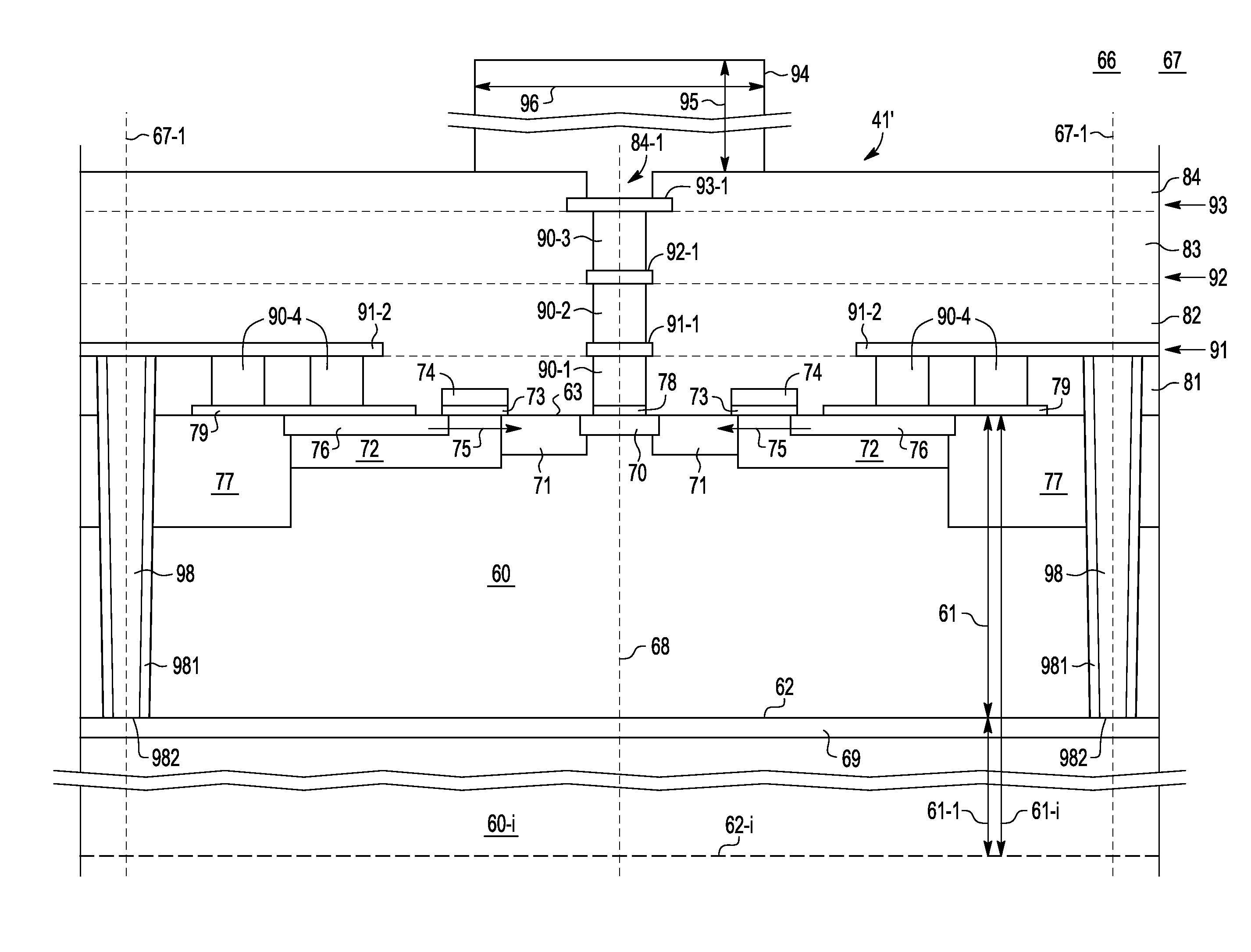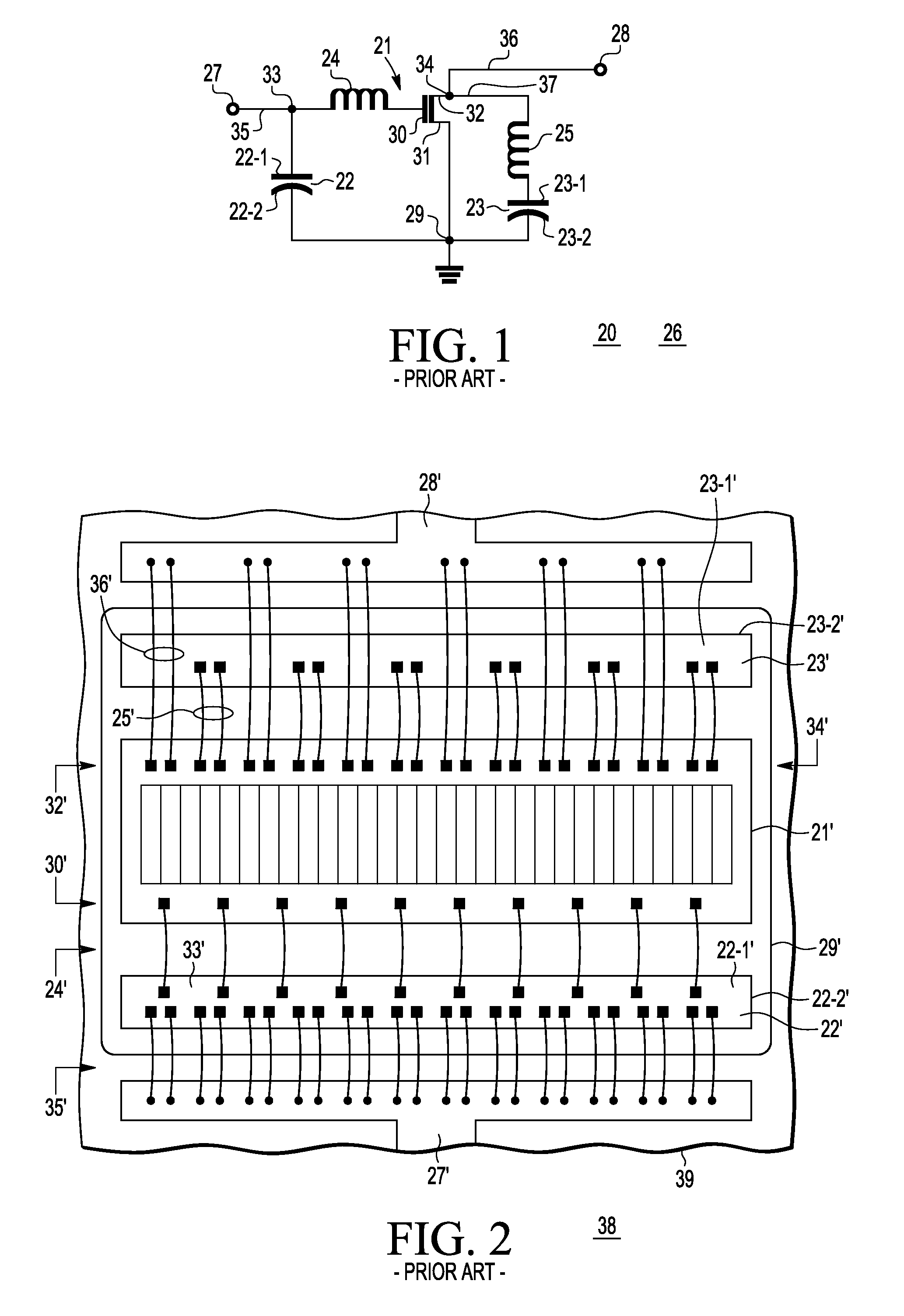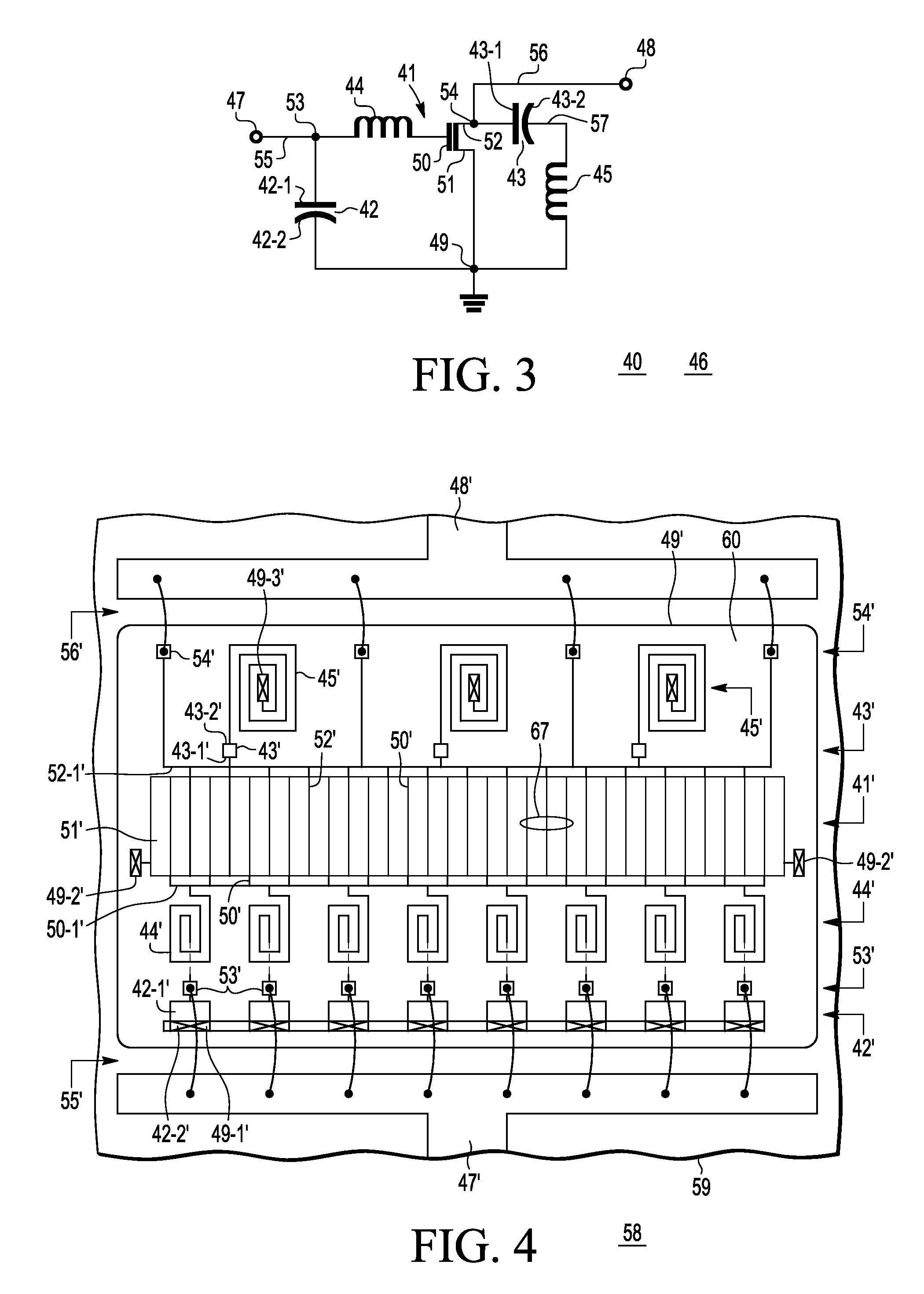Monolithic microwave integrated circuit
a monolithic, integrated circuit technology, applied in the direction of basic electric elements, transistors, inductances, etc., can solve the problems that the conventional approach of monolithic forming such active and passive elements on a common substrate has not proved practical for microwave structures
- Summary
- Abstract
- Description
- Claims
- Application Information
AI Technical Summary
Benefits of technology
Problems solved by technology
Method used
Image
Examples
first embodiment
[0039] there is provided a monolithic microwave integrated circuit (46, 58), comprising, a semiconductor substrate (60) having a bulk resistivity equal or greater than about 100 Ohm-cm, and having a front surface (63) and a rear surface (62), at least one transistor (41) formed in the semiconductor substrate (60) and having an input terminal (50), an output terminal (52) and a reference terminal (51), at least one capacitor (42′, 43′) monolithically formed over the semiconductor substrate (60), at least one inductor (44′, 45′) monolithically formed over the semiconductor substrate (60), and planar interconnections overlying the semiconductor substrate (60) coupling the at least one transistor (41′), capacitor (42′, 43′), and inductor (44′, 45′) to form the monolithic integrated circuit (46, 58). According to a further embodiment, the monolithic microwave integrated circuit (46, 58), further comprising an input node (53, 53′) thereof and an output node (54, 54′) thereof, both support...
second embodiment
[0040] there is provided a method for forming a monolithic microwave integrated circuit (46, 58) having an input terminal (47), an output terminal (48) and a reference terminal (49, 69, 69′), the method comprising, providing a high resistivity initial semiconductor substrate (60-i) having an initial thickness (61-i) between a first surface (63) and an initial second surface (62-i), forming at least one transistor (41′) in the initial semiconductor substrate (60-i) with input terminal (50, 50′, 74), output terminal (52, 52′, 70, 78) and reference terminal (51, 51′, 76, 79) proximate the first surface (63), forming one or more conductor filled substrate vias (49′, 98, 98′) extending into the initial semiconductor substrate (60-i) through the first surface (63), forming one or more planar capacitors (42′, 43′) over the first surface (63) of the initial substrate (60-i), each capacitor (42′, 43′) having first (42-1′, 43-1′) and second (42-2′, 43-2′) terminals, forming one or more planar...
third embodiment
[0041] there is provided a monolithic microwave integrated circuit (46, 58) having a circuit input terminal (47′), a circuit output terminal (48′) and a circuit reference terminal (49, 49′, 69, 69′), comprising, a semiconductor substrate (60) having a bulk resistivity equal or greater than about 100 Ohm-cm, and having a front surface (63) and a rear surface (62), wherein the rear surface (62) has thereon the circuit reference terminal (49, 49′, 69, 69′), at least one LDMOS transistor (41′) formed in the substrate (60) and having a transistor input terminal (50′), a transistor output terminal (52′) and a transistor reference terminal (51′), wherein the transistor reference terminal (51′) is coupled to the circuit reference terminal (49, 49′, 69, 69′), at least first (42′) and second (43′) monolithic planar capacitors overlying the front surface (63′), at least first (44′) and second (45′) monolithic planar inductors overlying the front surface (63′), and wherein the first capacitor (...
PUM
 Login to View More
Login to View More Abstract
Description
Claims
Application Information
 Login to View More
Login to View More - R&D
- Intellectual Property
- Life Sciences
- Materials
- Tech Scout
- Unparalleled Data Quality
- Higher Quality Content
- 60% Fewer Hallucinations
Browse by: Latest US Patents, China's latest patents, Technical Efficacy Thesaurus, Application Domain, Technology Topic, Popular Technical Reports.
© 2025 PatSnap. All rights reserved.Legal|Privacy policy|Modern Slavery Act Transparency Statement|Sitemap|About US| Contact US: help@patsnap.com



